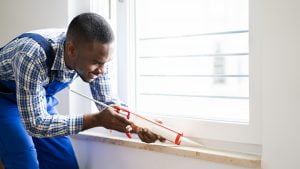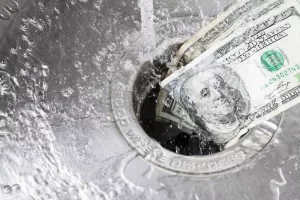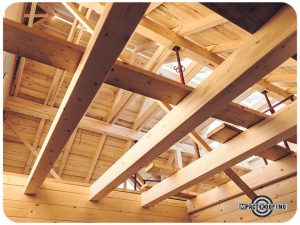6 Inexpensive Ways To Weatherproof Your Home (2022)
Go Back To Previous PageLiving in a weatherproof home is a dream come true for many people. However, only a small group of homeowners has managed to do so. Financial limitations usually stand between property owners and bringing this dream to fruition. However, what if we told you that weatherproofing your house doesn’t have to be expensive?
limitations usually stand between property owners and bringing this dream to fruition. However, what if we told you that weatherproofing your house doesn’t have to be expensive?
Simple solutions, such as weatherstripping your doors and windows and adding honeycomb shades, can significantly improve your home’s comfort and reduce your energy bills for heating and cooling.
If you want to upgrade your property and prepare it for a long, cold winter, the following are several ways to do so without spending a fortune on repairs and maintenance projects.
Inspect Your Roof
Your roof is your home’s first defense against harsh weather conditions. It protects you from rain, snow, and strong winds. However, it can only provide this protection if it is in good condition. Therefore, you should regularly inspect it for any signs of damage.
If you want to keep your home safe during the coldest months, we recommend taking a few minutes to inspect your roof’s components. Look for loose shingles or tiles, and pay attention to any areas that might develop leaks.
If you encounter any issues, please get in touch with your local roofing contractor immediately and schedule a repair appointment. Also, check for any nailheads protruding from the roof’s surface. These nails can cause leaks that might leave your house exposed to moisture.
You can also extend your roof’s lifespan by regularly cleaning it and removing debris, such as leaves and branches.
Check Your Gutters
Chances are that you haven’t given much thought to your gutters until now. But once winter hits, you’ll wonder how you could have been so oblivious. Fallen leaves and twigs can quickly clog your gutters, causing severe damage to your roof and siding. It is essential to ensure that water doesn’t collect and freeze in your gutters, as this can cause your ceiling and walls to crack.
The best way to care for your gutters is to hire a professional to inspect everything. Minor repairs are easy to do yourself, though. Additionally, it might be a good idea to invest in gutter guards. They can protect your gutters from debris and prolong their lifespan.
Add Insulation material
Unsurprisingly, insulation is the primary method for weatherproofing your home. Having it in place will ensure that heat and cold don’t enter or leave your property. It will also keep drafts at bay and prevent the masonry from deteriorating, while helping to maintain a healthier environment. These are cost-effective and are part of our energy-saving strategies.
Fiberglass and cellulose are the two most common types of insulation. Both are available in rolls or batts, allowing you to apply them yourself with minimal effort. However, you’ll need to be familiar with the correct technique and have the right tools for the job.
Adding insulation to your attic, crawl spaces, and walls is a straightforward way to reduce energy consumption and lower your heating bills. Nevertheless, remember that insulation costs vary depending on the type of material you choose and the size of your home.
Weatherstrip Your Doors and Windows
Drafty doors and windows are among the most common causes of energy loss in a home. Consequently, sealing your doors and windows with a door draft stopper is necessary when weatherproofing your home.
Inspect the sides of your doors and windows for gaps or cracks, and seal them with weatherstripping or caulk. This will significantly enhance your home’s comfort and lower your energy consumption.
You can order custom-made pieces from an online store or buy a set that fits most doors and windows. Nevertheless, ensure you follow the manufacturer’s instructions to achieve optimal results.
The best way to weatherstrip your doors and windows is to use foam sticks that expand when they come into contact with heat. After installing them in the gaps around your doors and windows, they will keep calm and warm air out during extreme temperatures.
Install Storm Doors and Windows to Weatherproof Your Home
Many homeowners are reluctant to invest in storm windows and doors. They think these weatherproofing products are too expensive and are not entirely wrong.
Nevertheless, installing them doesn’t have to be a financial burden. If you shop around and research door installation options, you can find some fantastic products at affordable prices.
Storm doors and windows are a great way to protect your home from strong winds and flying debris.
They are built to provide a tight seal when closed, preventing air leaks and moisture from entering your house.
At the same time, most storm doors and windows are usually made of durable materials, such as aluminum or steel, and they come with various features, such as shatter-resistant glass and wind-resistant screens. Installing a storm door and window is a great way to reduce energy consumption and save money on utility bills during colder seasons.
Additionally, installing storm doors and windows will help you keep your home warmer in the winter and cooler in the summer. This is because they help prevent cool air from coming inside in the fall and warm air from escaping in the spring.
Add Honeycomb Shades to Weatherproof Your Home
Honeycomb shades are a great, low-cost way to improve your home’s comfort. They’re made of thick fabric that traps air between its layers, creating an insulating barrier that keeps your home warm in winter and cool in summer.
They’re also easy to install and can be found for a minimal price in most hardware stores.
Consider adding these shades to your windows if you’re on a tight budget. They’ll do a great job of preventing heat from escaping through your windows and helping you stay warm during the winter.
The Bottom Line: How to Weatherproof Your Home.
Is your home ready for the upcoming season? If you haven’t, there’s no need to fret! With these strategies and tricks, you can weatherproof it in no time.
Some of the best ways to improve your home’s resiliency against the elements include inspecting your roof, adding insulation, and installing storm doors and windows. Check your gutters for water damage and weatherstrip your doors and windows to minimize energy loss.
If you want to learn more about the subject or plan to upgrade your home in the future, this guide will be a handy reference. The above tips and tricks can significantly improve your home comfort and energy efficiency.


